Casio EQW-M1100DB-1AER Handleiding
Bekijk gratis de handleiding van Casio EQW-M1100DB-1AER (6 pagina’s), behorend tot de categorie Horloge. Deze gids werd als nuttig beoordeeld door 29 mensen en kreeg gemiddeld 3.7 sterren uit 15 reviews. Heb je een vraag over Casio EQW-M1100DB-1AER of wil je andere gebruikers van dit product iets vragen? Stel een vraag
Pagina 1/6

1
Operation Guide 5122
MA1005-EA
Congratulations upon your selection of this CASIO watch.
This watch does not have a city code that corresponds to the UTC offset of –3.5
hours. Because of this, the radio-controlled atomic timekeeping function will not
display the correct time for Newfoundland, Canada.
Note that CASIO COMPUTER CO., LTD. assumes no responsibility for any
damage or loss suffered by you or any third party arising through the use of this
product or its malfunction.
About This Manual
Left Dial hand
B +
*> 56
@
Button operations are indicated using the letters A
through shown in the illustration.D
Hand Functions
z Hour Hand
x Second Hand
c Minute Hand
v Left Dial hand:
Indicates the current mode ( , , , ).TM ST WT AL
b Right Dial Hands:
Indicate a time, in 24-hour format,
depending on the current mode.
n 24-hour Hand:
Indicates the current 24-hour timekeeping hour.
m Day
This User’s Guide uses numbers shown above to identify
watch hands and indicators.
Things to check before using the watch
1. Hold down at least two seconds to enter the Timekeeping Mode, and C
then observe the movement of the
x .Second Hand
Is the moving smoothly at one-second intervals?xSecond Hand
Is the moving at xSecond Hand
two-second intervals or is it stopped
completely?
Go to step 2.
The watch is charged sufficiently.
For details about charging, see
“Charging the Watch”.
Power is low. Charge the watch by placing
it in a location where it is exposed to light.
For details, see “Charging the Watch”.
NO
YES
YES
NEXT
2. Check the Home City and the daylight saving time (DST) setting.
Use the procedure under “To configure summer time and other Home City settings” to
configure your Home City and daylight saving time settings.
Important!
Proper time calibration signal reception and World Time settings depend on correct
Home City, time, and date settings in the Timekeeping Mode. Make sure you
configure these settings correctly.
3. Set the current time.
•To set the time using a time calibration signal
See “To get ready for a receive operation”.
•To set the time manually
See “Configuring Current Time and Date Settings Manually”.
The watch is now ready for use.
For details about the watch’s radio controlled timekeeping feature, see “Radio •
Controlled Atomic Timekeeping”.
Charging the Watch
The face of the watch is a solar cell that generates power from light. The generated
power charges a built-in rechargeable battery, which powers watch operations. The
watch charges whenever it is exposed to light.
Charging Guide
Whenever you are not
wearing the watch, leave
it in a location where it is
exposed to light.
Best charging •
performance is achieved
by exposing the watch to
light that is as strong as
possible.
When wearing the watch,
make sure that its face is
not blocked from light by the
sleeve of your clothing.
The watch may enter a •
sleep state if its face is
blocked by your sleeve
even only partially.
Warning!
Leaving the watch in bright light for charging can cause it to become quite hot.
Take care when handling the watch to avoid burn injury. The watch can become
particularly hot when exposed to the following conditions for long periods.
On the dashboard of a car parked in direct sunlight •
Too close to an incandescent lamp •
Under direct sunlight •
Important!
Keep the watch in an area normally exposed to bright light when storing it for long •
periods. This helps to ensure that power does not run down.
Storing the watch for long periods in an area where there is no light or wearing it in •
such a way that it is blocked from exposure to light can cause power to run down.
Make sure that the watch is exposed to bright light whenever possible.
Power Levels
You can get an idea of the watch’s power level by
observing the movement of the
x in the Second Hand
Timekeeping Mode.
If the •x is moving normally at one-second Second Hand
intervals, power is at Level 1.
If the •x is moving at two-second intervals, Second Hand
power is at Level 2, which is quite low. Expose the watch
to light as soon as possible so it can charge.
Level Hand Movement Function Status
1 Normal. All functions enabled
2
x moves at two-second Second Hand
intervals.
m changes to (home position).Day 1
Beeper, time calibration signal
reception disabled
3
x stopped.Second Hand
z and Hour Hand cMinute Hand
stopped at 12 o’clock.
All functions disabled
When power drops to Level 3, all functions will be disabled but the watch will •
continue to keep time internally for about one week. If you recharge the battery
sufficiently during this period, the analog hands will move automatically to the
correct setting and regular timekeeping will resume. After one week, all settings
(including timekeeping) will be cleared. Recharging the battery will reset all settings
to their initial factory defaults.
Power Recovery Mode
The watch is designed to go into a power recovery mode that stops hand operation
temporarily whenever power suddenly drops below a certain level due to overuse
of the alarm tone over a short period. Note that all operations are disabled while the
watch is in the power recovery mode.
The hands will move to the correct positions and the watch will resume normal
operation after power recovers (in about 15 minutes). Putting the watch in a location
where it is exposed to light will help power to recover sooner.
Charging Times
Exposure Level (Brightness) Daily
Operation
*1
Level Change *2
Level 3 Level 2 Level 1
Outdoor sunlight (50,000 lux) 8 minutes 2 hours 23 hours
Window sunlight (10,000 lux) 30 minutes 6 hours 85 hours
Window sunlight on cloudy day
(5,000 lux) 48 minutes 8 hours 138 hours
Indoor fluorescent lighting (500 lux) 8 hours 92 hours – – –
1 Approximate exposure each day to generate power for normal daily operation. *
2 Approximate exposure to take power up one level. *
The above times are for reference only. Actual times depend on lighting conditions. •
For details about the operating time and daily operating conditions, see the “Power •
Supply” section of the Specifications.
Power Saving
Power Saving enters a sleep state automatically whenever the watch is left for a
certain period in an area where it is dark. The table below shows how watch functions
are affected by Power Saving.
There actually are two sleep state levels: “second hand sleep” and “function sleep”. •
Elapsed Time in Dark Operation
60 to 70 minutes (second hand sleep) x only stopped at 12 o’clock, all Second Hand
other functions enabled
6 or 7 days (function sleep)
All functions, including analog timekeeping, •
disabled
Internal timekeeping maintained •
The watch will not enter a sleep state between 6:00 AM and 9:59 PM. If the watch •
is already in a sleep state when 6:00 AM arrives, however, it will remain in the sleep
state.
The watch will not enter a sleep state while it is in the Stopwatch Mode. •
To recover from the sleep state
Move the watch to a well-lit area or press any button.
Radio Controlled Atomic Timekeeping
This watch receives a time calibration signal and updates its time setting accordingly.
However, when using the watch outside of areas covered by time calibration signals,
you will have to adjust the settings manually as required. See “Configuring Current
Time and Date Settings Manually” for more information.
This section explains how the watch updates its time settings when the city code
selected as the Home City is in Japan, North America, Europe, or China, and is one
that supports time calibration signal reception.
If your Home City code setting is this: The watch can receive the signal from the
transmitter located here:
LON, PAR, ATH Anthorn (England), Mainflingen (Germany)
HKG Shangqiu City (China)
TYO Fukushima (Japan), Fukuoka/Saga (Japan)
HNL, ANC, LAX, DEN, CHI, NYC Fort Collins, Colorado (United States)
Important!
The areas covered by •HNL ANC and are quite far from the calibration signal
transmitters, so certain conditions may cause reception problems.
When •HNL HKG or is selected as the Home City, only the time and date are
adjusted according to the time calibration signal. You need to switch manually
between standard time and daylight saving time (DST) if required.
See “To configure summer time and other Home City settings” for information about
how to do this.
Moves at two-second
intervals.
@
B +
5

2
Operation Guide 5122
Approximate Reception Ranges
UK and German Signals U.S. Signal
Anthorn
500 kilometers
1,500 kilometers
Mainflingen
The Anthorn signal is receivable
within this area.
2,000 miles
(3,000 kilometers)
600 miles
(1,000 kilometers)
Fort Collins
Japanese Signals Chinese Signal
Fukushima
500 kilometers
1,000 kilometers
Fukuoka/Saga
1,500 kilometers
Changchun500 kilometers
Beijing
Shangqiu
Shanghai
Chengdu
Hong Kong
Even when the watch is within range of a transmitter, signal reception may be •
impossible due to the effects of geographic contours, structures, weather, the time
of year, the time of day, radio interference, etc. The signal becomes weaker at
distances of approximately 500 kilometers, which means that the influence of the
above conditions becomes even greater.
Signal reception may not be possible at the distances noted below during certain •
times of the year or day. Radio interference may also cause problems with reception.
Mainflingen (Germany) or Anthorn (England) transmitters: 500 kilometers −
(310 miles)
Fort Collins (United States) transmitter: 600 miles (1,000 kilometers) −
Fukushima or Fukuoka/Saga (Japan) transmitters: 500 kilometers (310 miles) −
Shangqiu (China) transmitter: 500 kilometers (310 miles) −
As of March 2010, China does not use Daylight Saving Time (DST). If China does •
go to the Daylight Saving Time system in the future, some functions of this watch
may no longer operate correctly.
Using this watch in a country covered by a time calibration signal that is different •
from the countries it supports may result in incorrect time indication due to local
application of summer time, etc.
To get ready for a receive operation
Confirm that the watch is in the Timekeeping Mode. If it isn’t, hold down 1. at least C
two seconds to enter the Timekeeping Mode.
The antenna of this watch is located on its 12 o’clock side. Position the watch with 2.
12 o’clock facing towards a window as shown in the nearby illustration. Make sure
there are no metal objects nearby.
12 o’clock
or
Signal reception normally is better •
at night.
The receive operation takes from two •
to seven minutes, but in some cases
it can take as long as 14 minutes.
Take care that you do not perform
any button operation or move the
watch during this time.
Signal reception may be difficult or •
even impossible under the conditions
described below.
Inside or
among
buildings
Inside a
vehicle
Near
household
appliances,
office
equipment,
or a mobile
phone
Near a
construction
site, airport,
or other
sources of
electrical
noise
Near
high-tension
power lines
Among
or behind
mountains
What you should do next depends on whether you are using Auto Receive or 3.
Manual Receive.
Auto Receive: Leave the watch over night in the location you selected in step 2. •
See “Auto Receive” for details.
Manual Receive: Perform the operation under “To perform manual receive”. •
Auto Receive
With Auto Receive, the watch performs the receive operation each day •
automatically up to six times (up to five times for the Chinese calibration signal)
between the hours of midnight and 5 a.m. (according to the Timekeeping Mode
time). When any receive operation is successful, none of the other receive
operations for that day are performed.
When a calibration time is reached, the watch will perform the receive operation •
only if it is in the Timekeeping Mode or World Time Mode. The receive operation is
not performed if a calibration time is reached while you are configuring settings.
To perform manual receive
In the Timekeeping Mode, keep 1. depressed (for about two seconds) as the D
x goes through the following sequence.Second Hand
Moves to •YES Y NO N (or for some models) or ( ) to indicate the last signal
reception result, then to ( ).READY R
The 2. indicates the operations the watch is currently performing.xSecond Hand
When the xSecond
Hand is pointed here: It means this:
READY (R) Watch is setting up for reception.
WORK (W) Reception is in progress.
If signal reception is unstable, the •x Second Hand
may move between ( ) and ( ). WORK W READY R
Regular timekeeping resumes after the receive operation 3.
is complete.
When the receive operation is successful, the watch •
adjusts the time setting accordingly. It does not adjust
the setting if the operation failed.
Note
To interrupt a receive operation and return to the •
Timekeeping Mode, press any button.
To check the result of the latest receive operation
In the Timekeeping Mode, press .D
The •x will move to ( ) for five Second Hand YES Y
seconds if the latest receive operation was successful,
or ( ) if it was not. After that, regular timekeeping NO N
will resume.
You can return to the Timekeeping Mode manually by •
pressing while the Dx is pointing to Second Hand YES
( ) or ( ).Y NO N
Note
The •x will indicate ( ) if you have Second Hand NO N
adjusted the time or date setting manually since the
latest receive operation.
Radio-controlled Atomic Timekeeping Precautions
Strong electrostatic charge can result in the wrong time setting. •
Even if a receive operation is successful, certain conditions can cause the time •
setting to be off by up to one second.
The watch is designed to update the date automatically for the period January 1, •
2000 to December 31, 2099. Updating of the date by signal reception will no longer
be performed starting from January 1, 2100.
If you are in an area where signal reception is not possible, the watch keeps time •
with the precision noted in “Specifications”.
The receive operation is disabled under any of the following conditions. •
While power is at Level 2 or lower −
While the watch is in the power recovery mode −
When the watch is in the function sleep state (“Power Saving”) −
A receive operation is cancelled if an alarm sounds while it is being performed. •
Mode Reference Guide
Your watch has four “modes”. The mode you should select depends on what you
want to do.
Note
There are also various setting modes, which you can enter by holding down •A in
the Timekeeping Mode. See “Setting Modes” for more information.
To do this: Enter this mode:
View the current time in your Home City and in one of 29 other •
cities around the globe
View the current date in the Home City •
Perform a time calibration receive operation •
Timekeeping Mode
Use the stopwatch to measure elapsed time Stopwatch Mode
Select one of 29 cities (time zones) around the world and view the •
current time there
Select daylight saving/summer time (DST) or standard time for a •
time zone
World Time Mode
Set an alarm time Alarm Mode
Selecting a Mode
With this watch, everything starts from the Timekeeping Mode.
To determine the watch’s current mode
Check the position of the v as shown under Left Dial hand
“To select a mode”.
To return to the Timekeeping Mode from any other
mode
Hold down for at least two seconds.C
To select a mode
Press to cycle between the modes as shown below. The Cv indicates the Left Dial
currently selected mode.
The v rotates so the indicator for the current mode ( , , , ) is Left Dial TM ST WT AL
aligned with the pointer .
>
Timekeeping Mode Stopwatch Mode
v v indicates .Left Dial TM indicates , then Left Dial ST
aligns the dial hand with the
pointer .
C
World Time Mode
v indicates , Left Dial WT
then aligns the dial hand with
STD DST or .
Alarm Mode
v indicates .Left Dial AL
@
@
>

3
Operation Guide 5122
Setting Modes
The watch has a number of setting modes that you can use to configure its settings. In
the Timekeeping Mode, hold down until the setting mode you want is selected as A
described below. Release when the setting mode you want is selected.A
To select a setting mode
Hold down .A
x moves to 12 o’clock.Second Hand
(3 seconds)
x moves to 1 o’clock, indicating the Home Second Hand
City Setting Mode. See “To configure summer time and
other Home City settings”.
(3 seconds)
x moves to 2 o’clock, indicating the Manual Second Hand
Setting Mode. See “To change the current time setting
manually”.
(3 seconds)
x moves to 3 o’clock, indicating the Home Second Hand
Position Adjustment Mode. See “To adjust home positions”.
(3 seconds)
Watch returns to normal timekeeping.
If the •x home position is off due to the Second Hand
watch having been subjected to strong magnetism or
other abnormal treatment, the second hand may point
to other positions than those described in the above
procedure.
Timekeeping
Use the Timekeeping Mode to view the current time and date. To enter the
Timekeeping Mode from any other mode, hold down at least two seconds.C
Hand Functions
z Hour Hand
x Second Hand
c Minute Hand
v Left Dial hand: Indicates .TM
b Right Dial Hands:
Indicate the current time in the World Time City
in 24-hour format.
n 24-hour Hand:
Indicates the current 24-hour timekeeping hour.
m Day
Configuring Home City Settings
There are two Home City settings: actually selecting the Home City and selecting
either standard time or daylight saving time (DST).
To configure summer time and other Home City
settings
Note
This watch does not have a city code that corresponds •
to Newfoundland.
Use 1. as shown under “Setting Modes” to enter the A
“Home City Setting” mode.
The watch will exit the setting mode automatically if •
you do not perform any operation for about two or
three minutes.
For details about city codes, see the “City Code •
Table” at the back of this manual.
To change the Home City setting, press 2. to move the D
x clockwise.Second Hand
Press •D as many times as necessary until the
x is pointing at the city code you want Second Hand
to select as your Home City.
Holding down •D causes the x to move Second Hand
at high speed.
Each time you change the city code setting, the •
z c n , Hour Hand , Minute Hand and 24-hour Hand
m move to the current time and date for that city Day
code. Do not perform the next operation until these
hands stop moving.
@
@
@
@
B +
*> 56
@
@
B +
6@> 5
Press 3. to select (AUTO), (standard time), or (daylight saving time) BAT STD DST
for the currently selected city code.
While you are selecting the Home City code, the •v will indicate Left Dial hand
the setting ( , , ) of the currently selected city code.AT STD DST
Note that you cannot change the summer time setting while •UTC is selected as
your Home City.
The following explains each of the available summer time settings. −
AT (AUTO) This setting causes the watch to switch between standard time and
summer time automatically, in accordance with time calibration
signal data. This setting is available only when a city code that
supports signal reception is selected as the Home City.
STD With this setting, the watch always indicates standard time. It does
not indicate summer time.
DST With this setting, the watch advances its time setting by one hour
to indicate summer time (daylight saving time).
After all the settings are the way you want, press 4. to return to the Timekeeping A
Mode.
Note
After you specify a city code, the watch will use UTC* offsets to calculate the World •
Time based on the current time in your Home City.
Selecting some city codes makes it possible for the watch to receive the time •
calibration signal for the corresponding area automatically.
Coordinated Universal Time, the world-wide scientific standard of timekeeping. The *
reference point for UTC is Greenwich, England.
Configuring Current Time and Date Settings Manually
You can configure current time and date settings manually when the watch is unable
to receive a time calibration signal.
To change the current time setting manually
Use 1. as shown under “Setting Modes” to enter the A
“Manual Setting” mode.
The •x will move to 12 o’clock. This is Second Hand
the time setting mode.
In the following steps, each press of •C cycles between settings as shown
below.
Hour/Minute Year (tens digit)
Day Month
Year (ones digit)
Use 2. (+) and (–) to change the time (hour and D B
minute) setting.
Each press of either button will move the hands •
(z c and Hour Hand ) one minute.Minute Hand
Holding down •D B or will start high-speed zHour
Hand and c movement in the applicable Minute Hand
direction. To stop high-speed hand movement, press
any button.
The •n z and 24-hour Hand move in sync Hour Hand
with each other.
When setting the time, make sure that the •n 24-hour
Hand indicates the proper a.m./p.m. hour.
If you want to change the date setting at this time, •
press and perform the procedure starting from C
step 3 under “To change the current date setting
manually”.
After the time setting is the way you want, press 3. to return to regular A
timekeeping.
This will cause the •x to move automatically to 12 o’clock and Second Hand
resume movement from there.
To change the current date setting manually
@
00
50
10
40
20
3090
60
80
70
Setting the year (tens digit)
Use 1. as shown under “Setting Modes” A
to enter the “Manual Setting” mode.
Press 2. .C
The •x Second Hand will move to the tens digit of
the current year setting. This is the year setting
mode.
The year can be set in the range of 2000 to 2099. •
@
0
5
1
4
2
3
9
6
8
7
Setting the year (ones digit)
Press 3. to move the clockwise DxSecond Hand
until it is pointing at the year tens digit you want
to select.
After you select the year tens digit, press 4. .C
The •x will move to the ones digit Second Hand
of the current year.
Press 5. to move the Dx clockwise Second Hand
until it is pointing at the year ones digit you want
to select.
@
B +@
6
Product specificaties
| Merk: | Casio |
| Categorie: | Horloge |
| Model: | EQW-M1100DB-1AER |
| Gewicht: | 110 g |
| Stopwatch: | Ja |
| Waterbestendig diepte: | 100 m |
| Wereldklok functie: | Ja |
| Alarm functie: | Ja |
| Agenda: | Ja |
| Horlogekast materiaal: | Roestvrijstaal |
| Band materiaal: | Kunststof |
| Glas type van horloge: | Mineraalglas |
| Zonnekracht: | Ja |
| Radio signaal ontvanger: | DCF/MSF/WWVB/JJY/BPC |
| Afmetingen (B x D x H): | 46.9 x 13.7 x 51.5 mm |
| Type batterij: | CTL920 |
Heb je hulp nodig?
Als je hulp nodig hebt met Casio EQW-M1100DB-1AER stel dan hieronder een vraag en andere gebruikers zullen je antwoorden
Handleiding Horloge Casio
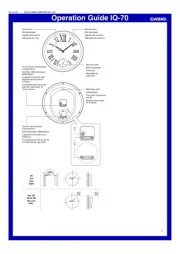
18 Juni 2025
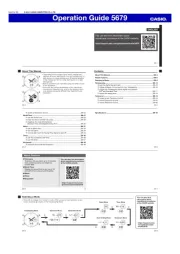
17 Juni 2025
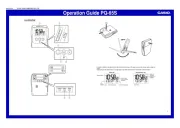
17 Juni 2025
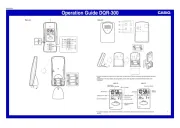
16 Juni 2025

16 Juni 2025
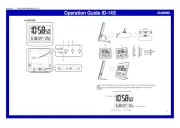
16 Juni 2025
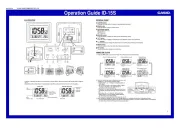
16 Juni 2025
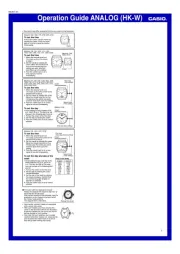
16 Juni 2025
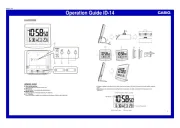
16 Juni 2025
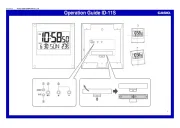
16 Juni 2025
Handleiding Horloge
- So & Co
- Lotus
- Raketa
- Grand Seiko
- Mondaine
- Hugo Boss
- Seiko
- Spinnaker
- Eurochron
- Guess
- Irox
- Inter-Quartz
- Beper
- MICHELE
- Dugena
Nieuwste handleidingen voor Horloge

5 Juli 2025

5 Juli 2025

4 Juli 2025

4 Juli 2025

4 Juli 2025

4 Juli 2025

4 Juli 2025

2 Juli 2025
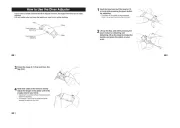
1 Juli 2025

21 Juni 2025